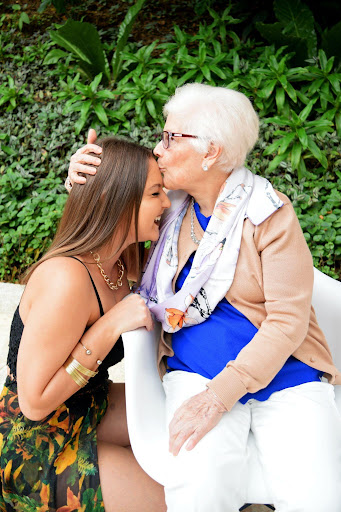
There are over 50 million seniors in America today. As the baby boomer generation continues to age, that number will continue to rise. Millions of these seniors are living active and independent lives. However, many others need extra care as they face changing health concerns and new limits on mobility and cognition. This is creating a new reality for caregiving in America.
Seniors need care for a variety of reasons. Some face declining physical mobility and need a little extra help with daily tasks. Others are experiencing mental decline due to dementia or Alzheimer’s disease. A growing number of seniors are faced with several of these conditions at once.
There are over 50 million seniors in America today. As the baby boomer generation continues to age, that number will continue to rise. Millions of these seniors are living active and independent lives. However, many others need extra care as they face changing health concerns and new limits on mobility and cognition. This is creating a new reality for caregiving in America.
Seniors need care for a variety of reasons. Some face declining physical mobility and need a little extra help with daily tasks. Others are experiencing mental decline due to dementia or Alzheimer’s disease. A growing number of seniors are faced with several of these conditions at once.
In-Home Care
Seniors needing care often wish to remain at home for as long as possible. They want to be in familiar surroundings and maintain as much independence as they can. For this reason, caregiving often happens in the home. In-home senior care is done by both professionals and family members.

The number of family caregivers is increasing as the population ages. According to a study by AARP, a quarter of Americans fill a caregiving role, a number that has grown significantly over the last five years. Family caregivers are often unpaid and working full-time jobs in addition to their caregiving role.
The ages of family caregivers span four generations, from millennials to fellow seniors. Many of these family caregivers, especially women, are also caring for young children and attempting to maintain their own careers and interests. This creates significant pressure for caregivers as they try to meet all of the demands and expectations on their time.
Challenges of Caregiving
The impacts of caregiving on family members are myriad. Becoming a caregiver puts demands on time. The average number of hours per week invested in the caregiving of adults is 28 hours per week. Over half of caregivers say that their hours have increased due to the COVID-19 pandemic. Caregivers experience immense pressure as they try to meet all of the demands on their time. Hours spent caring for a senior family member, often above the working hours of a part-time or full-time job, can leave caregivers exhausted and overwhelmed.
There are often financial losses involved in caring for an elderly family member as well. According to a study by Cambia Health, family caregivers often put major life decisions on hold due to the responsibility of caring for their loved ones. These decisions include not pursuing job changes, declining promotions, and even cutting their work hours as the care needs of their senior family members increase. These choices have implications in the short term, in dollars unearned, and in the long term, in lower social security benefits and retirement savings.
Caregivers also make personal sacrifices to care for a family member. The time invested in caregiving takes away from social activities and self-care. Many caregivers spend less time exercising and caring for their own health as they attend to their senior family members. This creates potential health risks for those caregivers.
Caring for Elderly Parents
People embrace caring for their loved ones for many reasons. Some do so out of genuine concern and love, some out of a sense of obligation, and some for more practical reasons such as costs. No matter the reason for making the choice to become a caregiver, those who do so still face varying combinations of stress, financial burdens, etc.
When adult children become caregivers for their parents, there is also the challenge of the shift in the relationship between them. Elderly parents are accustomed to caring for their children and they must adjust to being the recipient of care from their own children. Communication patterns must change to accommodate their new roles. There are several steps children can take to ease this transition, including regularly discussing the dynamic and discussing the dynamic, establishing roles, and making adjustments as necessary. Taking these steps can help lessen the stress and overwhelm of caring for aging parents.
Advantages of Technology
Caregiving in today’s world does have advantages over caregiving in the past. Many family caregivers are quite tech-savvy, and they know how to use technology to ease the burdens of caring for their senior loved ones. They take advantage of telehealth appointments, GPS trackers, and automated pill dispensers, among other tech tools, to help with their caregiving responsibilities. The advent of such technologies has made it safer for seniors to remain in their homes and maintain their independence safely.

An increase in the size of the senior population in America has changed caregiving in several ways. More family members are caring for their elderly relatives, creating stresses on their time, financial position, and social choices. While technology can help with some of the demands of caregiving, the reality is that, as the population continues to age and the number of seniors continues to increase, caregiving for the elderly will remain a source of stress on family members in the coming years.






















